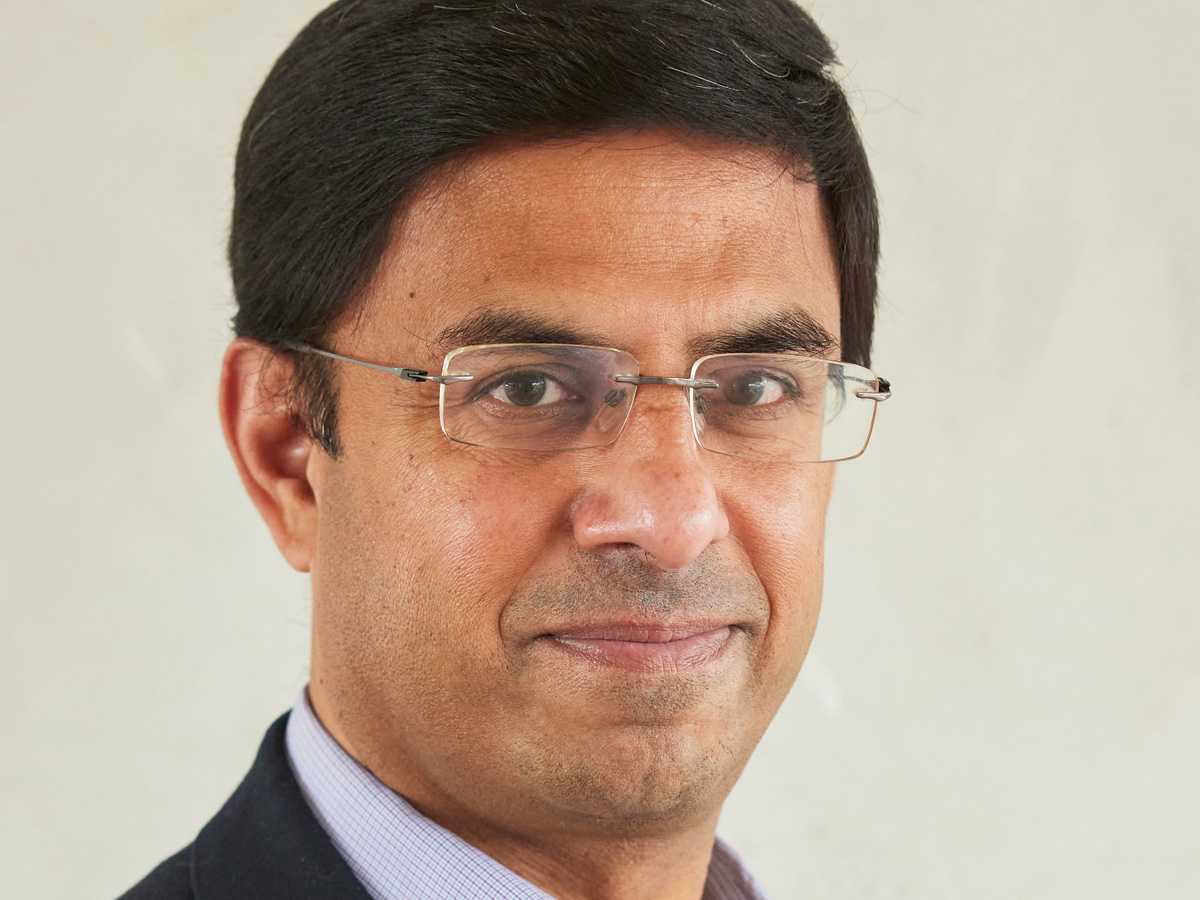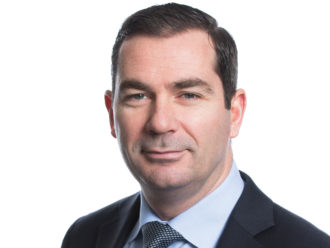You have been with the TfL Pension Fund for more than 13 years. What has changed during that time?
Perhaps it might be better to ask what hasn’t changed? Our strategic asset allocation has seen a complete sea change. It is now much more globally diversified. Then there is the governance of the fund, which has gone through a complete refresh.
A lot of great work has been done here by our fund secretary, Stephen Field. Good governance has been the stepping-stone to everything we have achieved in the past 10 years. It has allowed us to have much greater in-house resources and capacity and to take greater control over our destiny and how we work with our advisers and key stakeholders.
Like many other pension funds, we have made a conscious decision to address our home bias as part of building a more robust portfolio. Our allocation to the UK across all asset classes was 60% at one time, but is now down to around 8%, excluding our UK linkers and around 20% with them. That shows how big the change has been and how outward looking we have become as a scheme.
Unsurprisingly, sustainability is now fully embedded in our investment framework. In 2010, not many of us had heard about climate change, let alone net zero. Sustainability and climate change is now the third axis of our investment strategy. Finally, we had £4bn in assets back then; we have nearly £14bn today and are fully funded on technical-provision basis.
Why are you reducing your equity exposures in favour of alternatives?
Our key focus has been diversification with a clear focus on downside protection and risk management more generally. I’m sure that was always the case, but we are now thinking much harder about the return premiums and how we can slice and dice our strategy to be more diversified by economic environment, geography, sectors, style and themes.
That means our allocation to equities is down to 35% from a high of 65%. And in that bucket, the UK that once made up almost 60% of our equity allocation, is now more like 4% to 5% in line with our now much more global and diversified focus.
Our reduction to equities has been matched by an increase in allocation to alternatives, jumping from a low single digit to more than 40% and rising. Building a robust alternatives portfolio and reaping its benefits has been the real story of my fund, my trustees and my time here.
These changes cut right into the debate of should British pension funds invest more in UK equities. Why have you chosen not to do so?
As a pension fund, you must be aware of home bias, as I noted before. The UK’s share of the MSCI World has fallen during the past 10 years to about 4%. It has gone up slightly in the past 12 months but only marginally, so our allocation to the UK is in line with the benchmark.
Most of this is in actively managed mandates. We are not telling managers which market to choose. If they feel that the UK offers good options, they will allocate capital. That has always been the case. If I look at our value managers, they are over allocated to the UK versus other markets and we have benefited from that.
What I am not suggesting is that as a UK pension fund, we are having an overt tilt towards the UK. Home bias should always be on our minds and an allocation should be a function of opportunities based on the risks and returns the markets offer. At one stage, the UK was quite attractive on a valuation basis, but our trustees are not looking to over-allocate to the UK just because we are a UK pension fund.
We also must be aware of Transport for London’s covenant risk with its high UK/ London economic dependency. From a funding perspective, my trustees are quite mindful of diversifying against this risk as much as any other.
What alternative asset classes is the fund focused on?
TfL Pension Fund has one of the largest allocations to alternatives among our peers at about 40%. Private markets are around 28% and liquid alternatives – which are primarily hedge funds and low-cost absolute return strategies – are around 12%. Within those two broad categories, we are invested in almost every segment of the market.
Within private markets, about 9% of our fund is committed in infrastructure, 5% in real estate, 11% in private equity and nearly 5% in private credit. In the majority of cases, we are at or near our target allocation, but we are continuing to scale up these strategic asset allocation targets.
This is driven by our search for diversification, downside protection and desire to clip illiquidity premium in private markets.
We are a defined benefit scheme, but are still open and overall cashflow positive, so we can afford to take the long-term view required to invest in private markets. Every alternative asset class is different and is there for a good reason in our portfolio. Assets like infrastructure are return-seeking, liability-matching investments. Private credit – investment grade and sub-investment grade – complements our public bond allocation.
Our hedge fund portfolio is probably the most interesting and unique in our peer group, many of whom have exited this asset class. Our portfolio has a low correlation to equities, rates and credit. It is there purely to diversify the classic market risks, of which we had all in plenty last year.
Depending upon which markets you held, your assets could be down by as much as 20% to 25% last year but our fund was at for and I have our hedge fund portfolio to thank for that, while some funds returned as much as 50%. That showed the value of diversification.
We have never held highly levered long-short equity managers. Instead, the focus of allocation has been on risk-controlled macro, commodities and trend strategies that benefited from volatility last year.
Should the DB Funding Code consultation result in a greater distinction between the investment strategies of open and closed schemes?
There must be a distinction between open and closed schemes. Our needs are different from those of a closed scheme.
One-shoe-fits-all can’t be the right approach for our sector. That would certainly limit the options and the tools open schemes would have to deliver the returns needed. So the consultation should take into account the nature and needs of open schemes and our response to the consultation makes that point.
Why do you have a significant investment in emerging markets?
Emerging markets are quite close to my heart due to my connection to India and my years at the World Bank. Putting my preferences aside, it is the trustees who drive these important allocation decisions for the fund.
I have a couple of observations on our approach to emerging markets. First, it is consistent with our view on diversification as we expect EM countries to have a better long-term growth trajectory than the developed markets and different growth drivers.
Second, we have had a consistent policy of over-allocation to emerging markets versus the benchmark for more than 10 years because of our long-term investment focus and belief in these markets.
Third, we cast our net widely with an allocation to every possible emerging market sleeve. This includes private equity, equities, bonds, infrastructure, real estate and hedge funds. The only thing we haven’t done is private credit and that is not for the lack of trying.
Fourth, we have not shied from making bold and innovative moves. We were one of the seed investors in the IFC Emerging Market Fund back in 2014 when infrastructure was not even a mainstream asset class, let alone one focused on EM. I engage with the IFC Asset Mobilisation team to explore investment opportunities in the low-to-medium countries to address climate change and deliver the Sustainable Development Goals more generally.
On that theme, last year we made a $50m (£40.1m) commitment to a large green field solar platform in Brazil. We invested in renewables in India and China long before many pension funds were investing in their home renewables markets.
Of course, there is a perception that these are risky assets, and I’m not denying that. The important point here is to understand that they offer attractive risk-adjusted returns.
I have two related observations. We are firm believers in active management, as investing in emerging markets cannot be done passively.
The other is that there is a critical link between our sustainability and engagement strategy and investments in emerging markets. This is an asset class where our fund sees most value-add from engagement and impact delivery, not just on climate change but on multiple sustainability metrics.
What percentage of your entire portfolio is allocated to emerging markets?
We are roughly 2% in excess of the benchmark so about 12% of our equity allocation and around 8% overall. This is tiny compared to their economic footprint of around 60%.
With interest rates rising, are you concerned about further sovereign debt defaults?
Emerging markets is just one broad label. Within that label, at one extreme we have countries like South Korea and on the other side of the spectrum we have Mozambique, for example. The difference couldn’t be more immense.
This is why it is important that emerging markets are approached with caution and through active management.
We have default risks in our fixed income book. You can’t completely avoid them, but it is so important to be with an active manager in emerging markets who understands the economic and political dynamics to avoid the falling knives. Some will offer attractive headline returns but there is a reason for those returns.
Actually, if you look at some of the well-constructed frontier market portfolios, risk-adjusted returns are better, but not having a concentrated position is key.
The perception of risk in emerging markets is always greater than the reality with a tendency to extrapolate risks on the back of more idiosyncratic events, be it default by Sri Lanka or Ghana, as an example.
The way I see it, this perception premium allows for some attractive risk-adjusted opportunities, if harvested properly.
The fund also has a liability-driven investment strategy. How did that play out last year?
Like many pension schemes, our trustees have had an LDI overlay profile since 2010 with a range of triggers in place. So early last year, our hedge ratio was in single digits in conjunction with our real rates triggers.
The trustees understood the rates and inflation needed to be hedged but they had to take into account the open-ended nature and long-term focus of our scheme as well as value for money considerations. It made no sense to hedge real rates as low as -4%.
So when the LDI crisis hit last year, we were in quite a comfortable liquidity position with a collateral buffer of as much as 800 basis points within the LDI mandate and ample cash liquidity outside at the fund level.
Many schemes struggled but overall, our liabilities were down, assets held up well and our funding ratio improved significantly, so I can only say that we have been a net beneficiary of the LDI crisis and a general uptick in real rates.
Is that also because your cash reserves allowed you to enter the bond markets when some assets became more attractively priced?
Absolutely. Things have changed since, in terms of hedging and leverage. Real rates increased significantly, and our trustees took the view that they had become attractive enough to lock in.
Actually, we have increased our hedging by a significant margin to lock in the benefits we have seen on our liability side, and it seems that we are again going against the crowd. We didn’t hedge when others were happy to do it at almost any price, and now that the price is right, we have upped our hedging ratio when others are trimming or are unsure.
In those past 10 years, when real rates were down and falling, it is not that we forgot about hedging but that we focused more on proxy LDI assets such as infrastructure, UK PFI investments and renewables to some extent.
We bought these proxy LDI assets at attractive levels to build our hedges, but since September shifted our focus to classic LDI hedging using traditional LDI instruments. In a nutshell: we have ended up in a much better position post the LDI crisis.
Is this ambition to lock in the gains also based on an assumption that interest rates may have peaked?
Who can predict rates? Where they are today are not too far from the triggers we established years ago. Depending on which duration one wants to choose, rates are fairly well priced and consistent with our long-term assumption, so it makes sense for us to increase the hedge ratio.
By how much?
We were in single digits but now we are in material double digits. We are also quite mindful of liquidity risks and are maintaining healthy collateral buffers. We don’t know where the rates might go from here, so have to be prepared for all eventualities.
Timing the market is always a dangerous game, isn’t it?
Exactly. We only wanted to time it the moment it aligned with our long-term return requirements and real rate assumptions. We are not trying to time it tactically but it was getting quite difficult when real rates kept falling.
But increasing your hedges at this time is quite bold?
I wouldn’t call it bold; I would call it prudent risk management which is consistent with our long-term beliefs.
You have ambitious interim targets to reduce the carbon in your portfolio. How is that going?
We have definitely been bold here. Our target includes a 55% reduction by no later than 2030 and 100% no later than 2045. This applies to our entire portfolio, including alternatives, which are the trickiest assets to decarbonise.
These are early days for our equity and bond portfolios where the carbon footprint is down by 35% and 33%, respectively, compared to our 2016 baseline, improvements that are well ahead of the reductions seen in our benchmark. So more is required, but things are going in the right direction.
Generally, our green investments are up from nearly nothing to close to £250m. Again, it’s not just about what you shouldn’t own, but about what you should proactively own. My trustees strongly believe that it is as much about investing in the opportunities in the transition space as it is about risk managing climate exposed positions.
If I look at our fossil fuel exposure, the trend is down but last year it was up on the back of a strong price rally, so there is some way to go here, but in a considered and responsible way.
One thing I keep thinking about, and it applies to all pension funds, is that 10% to 15% of our holdings contribute 80% to 90% of our carbon exposure. These are energy-intensive sectors.
We know where the problem is and that is where the opportunity for engagement is. We don’t want to sell the assets and see them falling into less responsible hands.
We are trying to achieve two things: one is to reduce our allocation to companies that are not willing to change. The other is to increase allocation to companies and asset classes, which are part of the solution. For both, engagement and collaboration are an important part of our toolkit, but they can only be deployed if you stay invested.
Finally, what do you expect to see in the markets during the remainder of 2023?
Clearly 2022 was a huge challenge. Inflation surprise was the real villain, crushing almost every asset class. We have definitely reached peak inflation, but what I’m not sure of is that we are anywhere close to what the central banks would love to have, which is inflation at 2%.
Markets have priced in that rates will tail off and then fall, but the economy and earnings would remain okay. There is this struggle in getting the right balance between rate hikes and inflation without killing growth. That will be the main problem for this year and some of the market expectations on rates, inflation and growth are premature and over optimistic.
Some investors are starting their celebrations a bit too early. I hope I’m wrong and they are right, but we have to be mindful that the risks remain quite real.
What does this mean for pension funds?
We tend to think in decades. And the past 10 years were exceptional in terms of returns. It ranked right at the top investment decile on any metrics. But the next 10 years will not be anything like that. The world is different with geopolitics and supply chains a lot more disconnected, and many secular tailwinds risk becoming headwinds. That means we must be even more mindful of diversification and risk management.
The good news is that many schemes and endowments are in a good funding position, so at least we are starting the next 10 difficult years on a strong footing and therefore don’t need to take as much risk as we would have taken in the past decade and be handsomely rewarded for it.





Comments